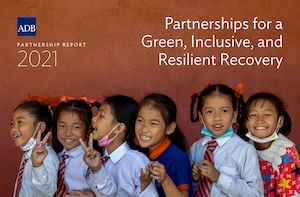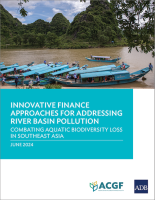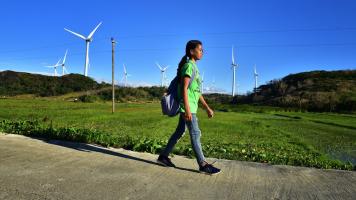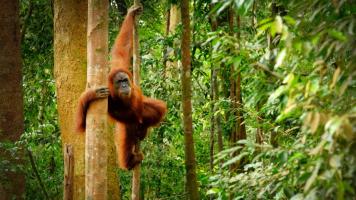Partnership Report 2021: Partnerships for a Green, Inclusive, and Resilient Recovery
This report highlights the work of ADB and its partners in cofinancing development work in 2021, balancing the need to address short-term COVID-19 response with ensuring longer-term pandemic recovery.
A total of $12.9 billion in financing was mobilized by the financing partners of the Asian Development Bank (ADB) in 2021 to support countries in Asia and the Pacific address short-term COVID-19 pandemic concerns and to ensure the recovery is green, resilient, and inclusive.
The ADB Partnership Report 2021: Partnerships for a Green, Inclusive, and Resilient Recovery highlights the work of ADB and its partners in cofinancing development work in 2021, balancing the need to address short-term COVID-19 response with ensuring longer-term pandemic recovery. ADB’s strong and reliable long-term partnerships played a major role in mobilizing financial resources and specialist knowledge during the pandemic.
About $8.9 billion or 69% of total cofinancing resources went to COVID-19 response and recovery.
The report, which is fully digital, also provides information how the funds were spent and details sovereign and non-sovereign commitments.



